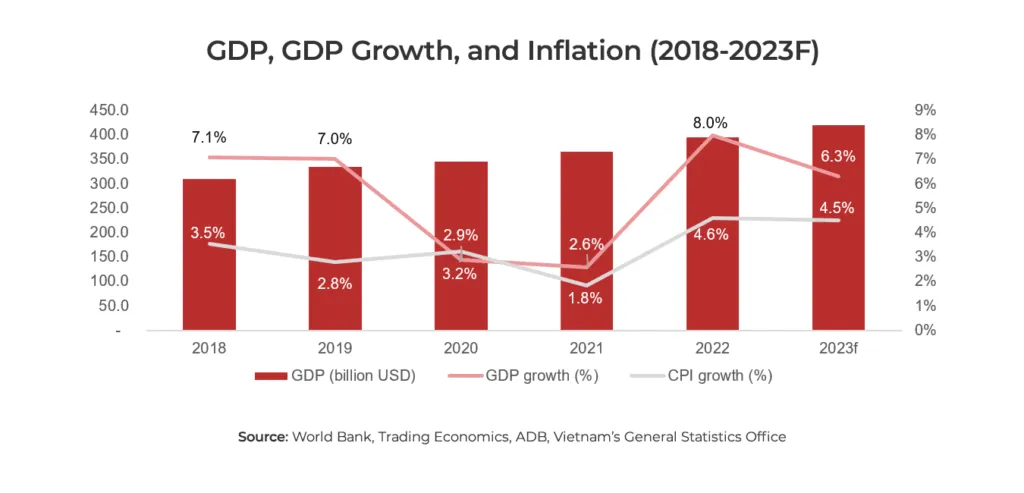Vietnam is setting new benchmarks in infrastructure development, positioning itself as a leader in Southeast Asia. The country invests an impressive 6% of its GDP in infrastructure, outpacing its regional peers and trailing only China, which invests 6.8% in Asia. This level of spending demonstrates Vietnam’s unwavering commitment to modernizing its transport, housing, and energy sectors, laying a strong foundation for sustained growth. Let’s take a look at the Infrastructure Investments in Vietnam below!
The Growing Infrastructure Investments in Vietnam

The infrastructure market in Vietnam is on a remarkable upward trajectory. By the end of 2024, it is projected to be valued at USD 18.33 billion. Looking ahead, it is expected to grow at a compound annual growth rate (CAGR) of 7%, reaching a substantial USD 26.11 billion by 2029. This growth underscores the increasing focus on infrastructure as a cornerstone of economic expansion, drawing both domestic and foreign investments.
Complementing this market surge is the robust performance of the construction sector. In the first half of 2024, the industry achieved a 7.34% growth rate—the highest for the same period since 2020. This momentum highlights the vital role Infrastructure Investments in Vietnam play in driving construction activity and supporting economic recovery.
Public-Private Partnerships: Scaling Up Projects
Public-Private Partnerships (PPPs) are emerging as a key tool in Infrastructure Investments in Vietnam and development strategy. By February 2024, the government had facilitated 117 PPP projects, collectively valued at USD 43 billion. These projects are guided by the recently enacted PPP Code, which fosters collaboration between the government and private investors.
This approach offers multiple advantages: it reduces the financial burden on the state, accelerates project timelines, and introduces private-sector expertise. Through PPPs, Vietnam is scaling up its infrastructure capabilities to meet the demands of rapid urbanization and industrialization.
Major Infrastructure Investments in Vietnam Transforming the Country
The Vietnamese government has unveiled an ambitious infrastructure blueprint that focuses on transport and housing. Between 2021 and 2030, USD 43–65 billion will be allocated to transport infrastructure projects, including roads, railways, and airports. These projects aim to improve domestic and international connectivity, reduce logistics costs, and boost trade competitiveness.
On the housing front, the government plans to complete 130,000 social housing units in 2024 alone. This initiative is part of a larger goal to build one million social housing units by 2030. By addressing housing shortages, the program not only improves living conditions for low-income families but also drives demand in the construction industry, creating opportunities for local businesses.
Impacts on the Construction Sector
The construction sector is reaping significant benefits from Infrastructure Investments in Vietnam. A 7.34% growth rate in 2024 illustrates the sector’s strong momentum, driven by large-scale projects and policy support. Beyond growth, these projects create jobs and stimulate demand for materials like steel and cement, bolstering related industries.
Social housing initiatives further amplify this impact. Smaller construction firms play a key role in these projects, spreading the economic benefits across various segments of the industry. The sector’s expansion reflects how infrastructure investments contribute to long-term economic resilience.
Infrastructure Investments in Vietnam are reshaping its economic and social landscape. With transformative projects in transport and housing, the country is laying the groundwork for inclusive growth and sustainable development. These statistics reflect not just numbers but a vision of progress that is setting Vietnam apart as a rising economic powerhouse in Southeast Asia.






